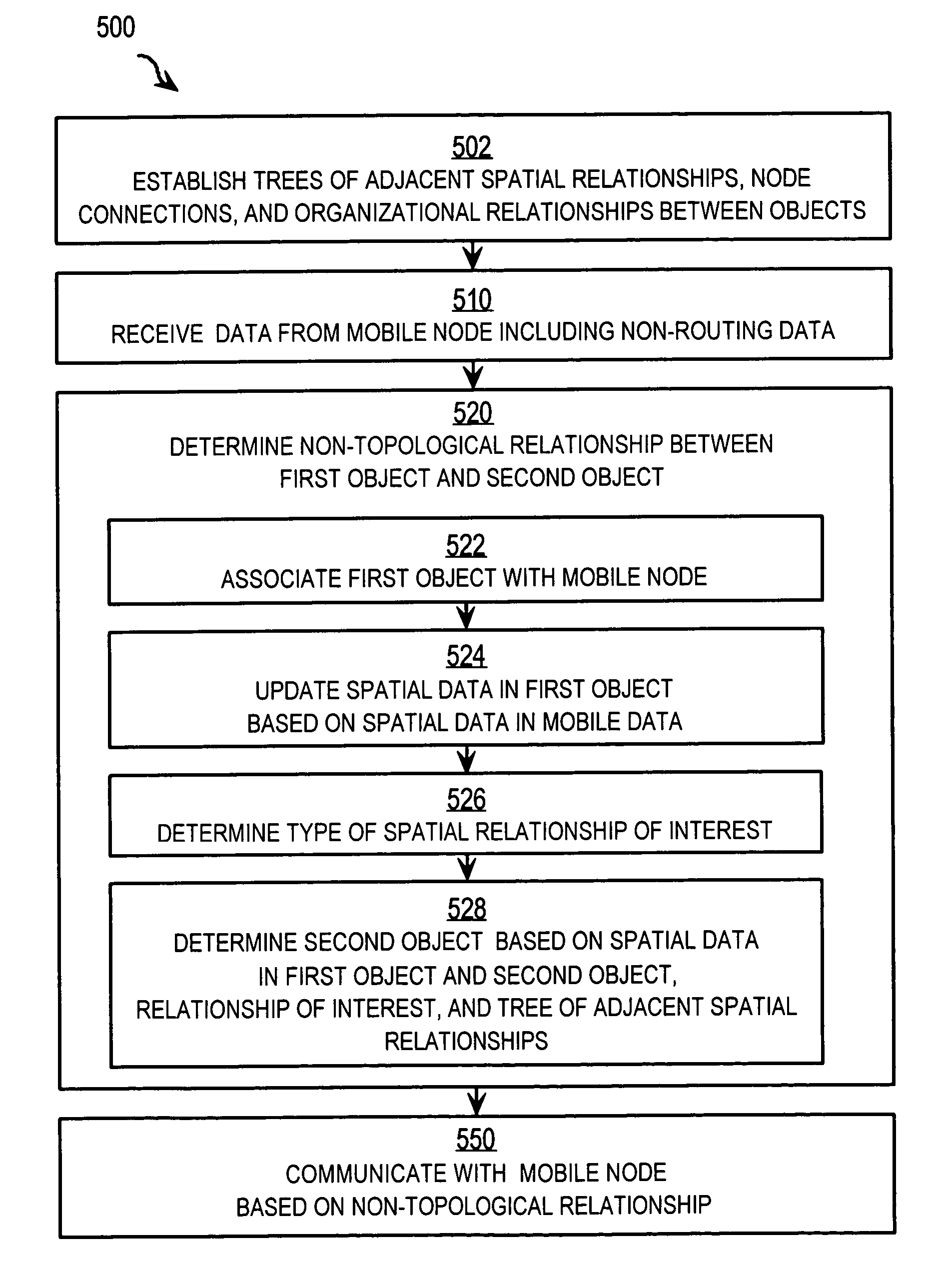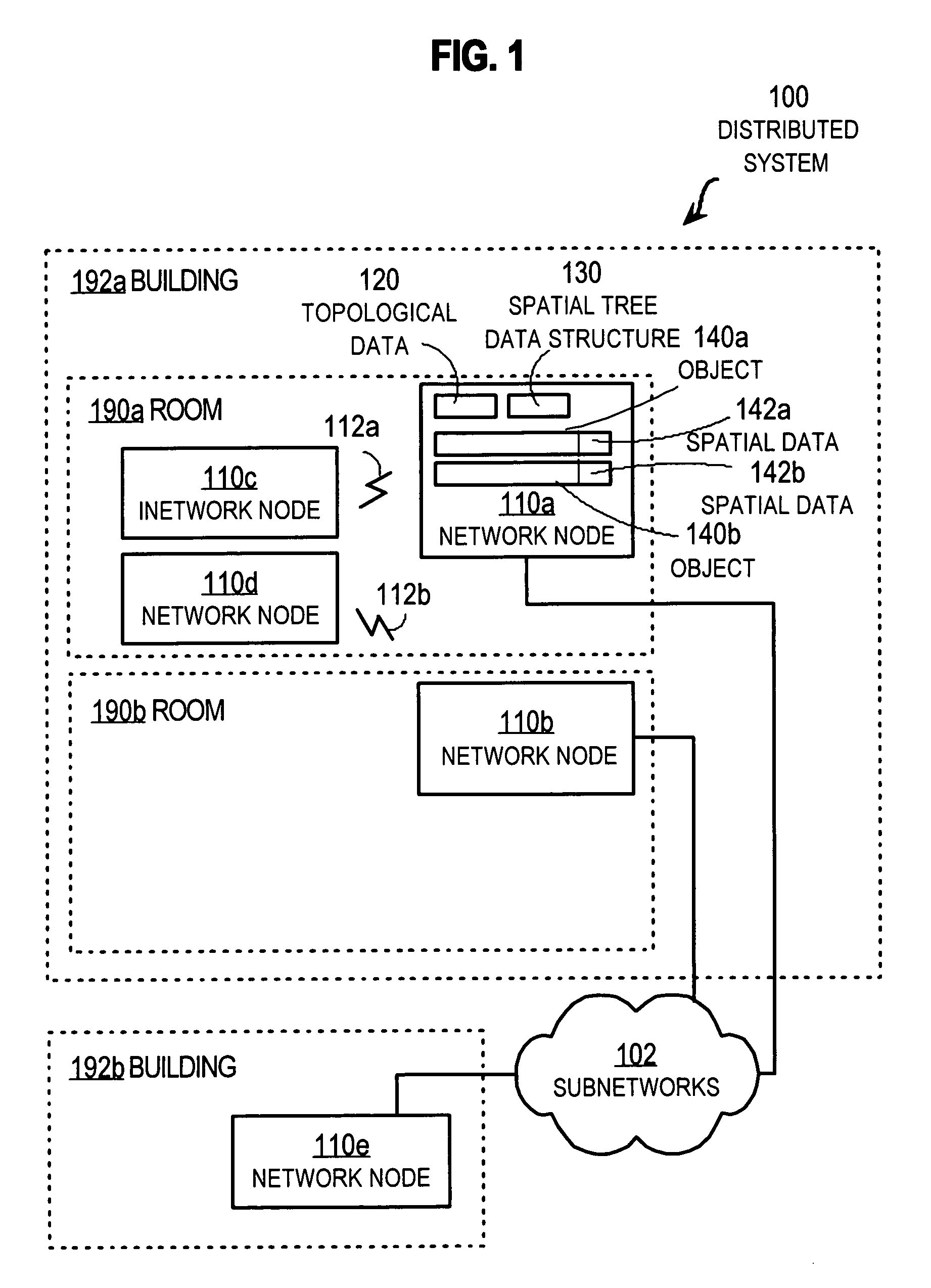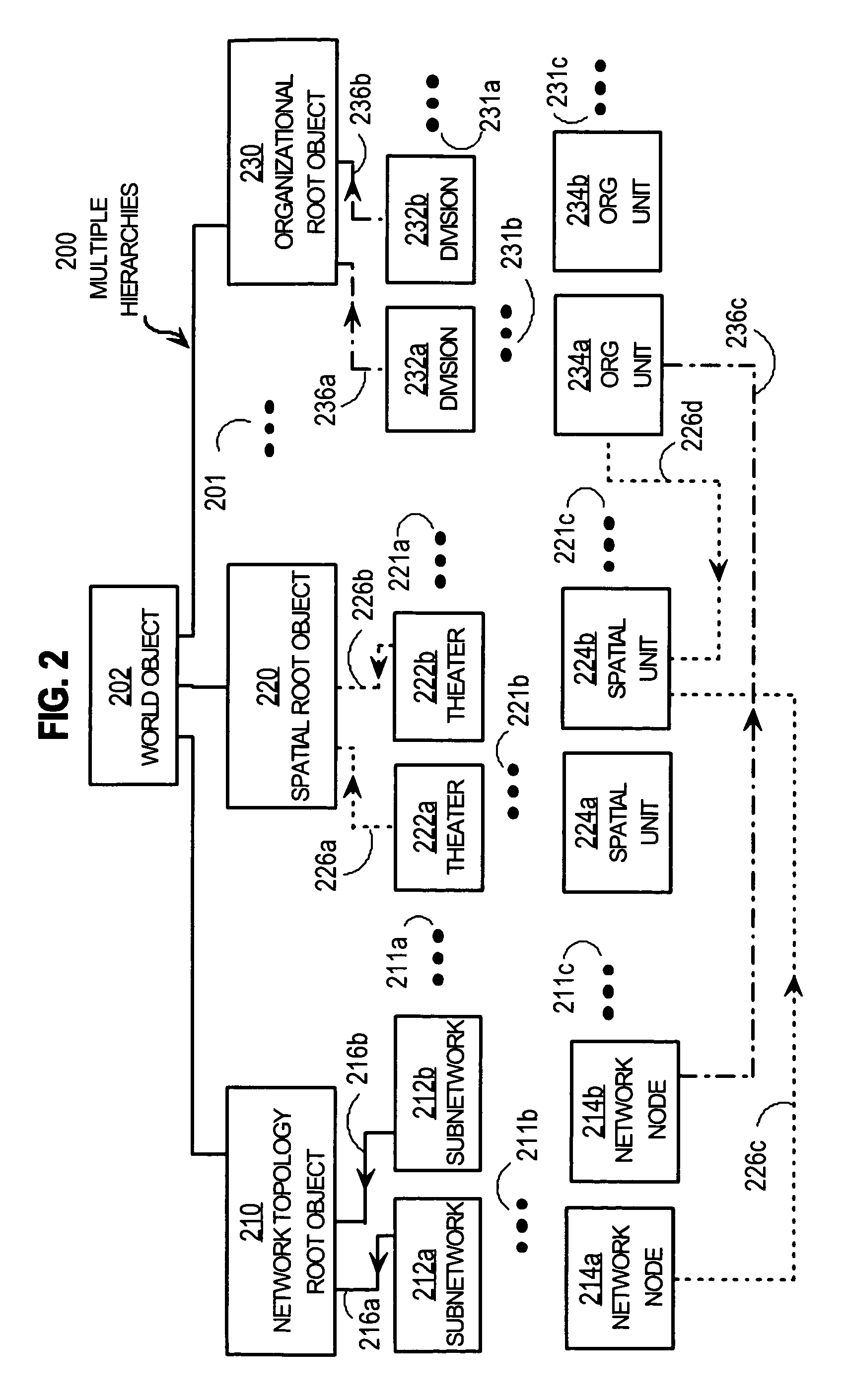Techniques for distributing data among nodes based on dynamic spatial/organizational state of a mobile node
a technology of dynamic spatial/organizational state and data distribution, applied in the direction of high-level techniques, instruments, wireless commuication services, etc., can solve the problems of dynamic network system not taking advantage of spatial information available from mobile nodes, worker consumes network resources, and insufficient topology models of current communication links to make decisions
- Summary
- Abstract
- Description
- Claims
- Application Information
AI Technical Summary
Benefits of technology
Problems solved by technology
Method used
Image
Examples
Embodiment Construction
[0032] A method and apparatus are described for distributing data based on a spatial or organizational state associated with a mobile node. In the following description, for the purposes of explanation, numerous specific details are set forth in order to provide a thorough understanding of the present invention. It will be apparent, however, to one skilled in the art that the present invention may be practiced without these specific details. In other instances, well-known structures and devices are shown in block diagram form in order to avoid unnecessarily obscuring the present invention.
[0033] For purposes of illustration, embodiments of the invention are described in the context of a MANet used by a rescue force, but the invention is not limited to this context. In other contexts, other networks, including stationary wireless access points for mobile nodes and cellular telephone networks, apply techniques of the present invention to support the same or different services.
1. St...
PUM
 Login to View More
Login to View More Abstract
Description
Claims
Application Information
 Login to View More
Login to View More - R&D
- Intellectual Property
- Life Sciences
- Materials
- Tech Scout
- Unparalleled Data Quality
- Higher Quality Content
- 60% Fewer Hallucinations
Browse by: Latest US Patents, China's latest patents, Technical Efficacy Thesaurus, Application Domain, Technology Topic, Popular Technical Reports.
© 2025 PatSnap. All rights reserved.Legal|Privacy policy|Modern Slavery Act Transparency Statement|Sitemap|About US| Contact US: help@patsnap.com



